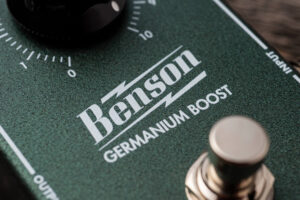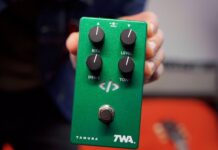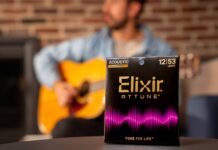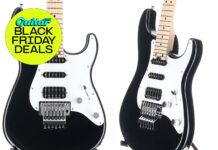
Boost pedals explained – from overdrive-shapers to simple volume lifts
Ever feeling yourself needing a boost? And not the C-tier Cadbury’s chocolate bar? Boost pedals can really help make your rig performance-ready, adding a lot of dynamics to both your level of gain and your actual volume. But how to use them and what they ultimately do can be a little confusing – so let’s explore how they can fit in a rig, and some great options you can buy today.
READ MORE: How much headroom do you need? Pedal platform amplifiers explained
So, what does a boost pedal do? While you may think this question has a stultifyingly self-evident answer, the reality is a little more complicated. In short, though, a boost does increase the level of your signal – that much, hopefully, you knew already. But there are lots of different ways in which different pedals achieve this signal increase, and lots of different ways to use the resulting sound, ranging from a totally linear uplift in level to a dirty, nasal, midrange spike.
The rest of your rig matters!
Other than the variation in circuitry, the other complicating factor in what a boost does is the rest of your rig. In short, it’s important to remember that a lot depends on your sonic goals and where you’re putting a boost within the larger context of your guitar, pedals and amplifier. The ideal type and placement of a boost depends on whether you want to push your gain a bit harder, shape the sound of a dirt pedal, or give yourself a clean volume lift for solos.
We’ve already explored headroom in more depth when looking at pedal platform amplifiers, but it’s worth a quick refresh here. If you increase signal into any amplifying device, there’s going to be a certain point where the output only gets more distorted rather than louder. Boost pedals will often mean you’re going to have to contend with your amp’s headroom. If your amp has run out of headroom, putting on a clean boost will not make it louder – it will just make it more distorted.
You can solve this by putting a boost in the effects loop, although get some earplugs in before you do that! And even then, you might still run out of power-amp headroom. This is also why pedal order is important more generally. If you put a boost before an overdrive or a distortion, you’re likely just going to make that pedal distort harder – if you place it after one and your amp has the headroom to handle it, then you’ll be able to get a cleaner level increase.
Both cases have their uses – putting a boost in front of a drive is conventionally done when the boost has its own shaping EQ character. For instance, a Rangemaster-style treble boost in front of a Big Muff compensates for the midrange scoop and reduces the amount of low-end being distorted for a tighter, more cutting sound. But if you want a simple volume increase for a solo, then it’s a better idea to put a cleaner boost after your distortions. But what makes a clean boost a clean boost?
Clean boosts
When people talk about clean boosts, this normally means two things – firstly, these pedals impart as little extra compression/distortion as possible, and any EQ controls are working with a flat, neat palette rather than shaping any extra “character”. These are the kinds of pedals that excel at simple volume increases for solos – but they can also be used to drive amp preamps and overdrive pedals harder. there are countless options out there, but here are just a few for a range of budgets:
MXR Micro Amp, Micro Amp+
[products ids=”4IBTfApmQs9zskTFnujYE5,6Z0zO2l3A5qZH23t5uqGGg”]
The MXR Micro amp is a great example of this style of boost. Its circuit is a simple op-amp, dialled in with enough headroom to give a big boost of signal without any extra clipping. The Micro Amp+ variant adds a clean, active two-band EQ for extra shaping.
Keeley Katana Mini
[products ids=”4uRPV2zcTzzptda5lvV4ry”]
The Keeley Katana Mini is a very clean and a very transparent boost pedal made with cascading FETs. There’s a huge range of volume available, and the full-sized Katana’s Pull Boost mode for a little bit of extra push has been integrated into the upper ranges of the volume knob here.
TC Electronic Spark and Spark MINI
[products ids=”HuPEc9lJZR1NHO1XTw8Ib,JUqru7F89anZtBTmoSfer”]
These two pedals are some of TC Electronic’s most well-regarded, up there with the Ditto as very long-standing, standard parts of the range that are great for guitarists on a bit of a budget. There’s nothing crazy going on circuit-wise – they’re just reliable, loud and clean, with the added bonus of an EQ control for the full-sized pedal.
Dirty boosts and character boosts
Here I’m collating some modern pedals that aim to add in a specific sonic character, while still avoiding being either ultra-linear, ultra-flat clean boosts. A lot of the time these take from the Rangemaster playbook (more on that in a moment) without exactly recreating the topology – that is, providing an all-important midrange kick to give you some extra oomph – while others are just a little too dirty to call clean, while still obviously being boosts rather than drives.
EarthQuaker Arrows
[products ids=”1NsuitEtGFFtzS2QKYR3lR”]
The EarthQuaker Devices Arrows is an awesome boost pedal with a great upper-midrange character – it’s cleaner and tighter than your typical Rangemaster-derived thing, and makes an absolutely excellent pairing with Big Muffs and/or gainy amplifiers to add some tightness and clarity for faster rhythm playing or soloing.
Electro-Harmonix Screaming Bird
[deals ids=”2gpI9ZLLt5jPtckAx8tEPN”]
A modified version of the LPB-1, the EHX Screaming Bird features altered input and output capacitors to offer quite a harsh high-end boost. While in some rigs it can be a bit like jamming knitting needles into your ears, in the right context it’s fantastic – if you want to evoke a vintage Brian May-style sound with a lot of high end, it’s a great option when paired with the right amp.
ZVEX Super Hard On
[products ids=”7fyd9B6KRhjZ0AZeigAw70″]
The ZVEX Super Hard On, despite its somewhat juvenile evocation of tumescence, is not messing about. It’s a JFET-based boost that offers frankly insane volume. It’s not totally clean, but it’s bright and punchy, and so loud the rest of your rig is unlikely to cleanly handle its absurd levels of output – in the best way possible. While it can be used to completely obliterate an amp’s front end, more subtle settings are also a great way to give life to a slightly dull set of pickups, thanks to that brightness.
JHS Haunting Mids
[products ids=”1YTk8sNaNG8pB3L617nmwr”]
The JHS Haunting Mids is part EQ pedal and part boost. The parametric midrange is really good for dialling in exactly what frequency you want to boost – making it a really powerful pre- or post-overdrive shaper.
Benson Germanium Boost
[products ids=”6TOkinT5Eopz7fd1UZm6ae”]
The Benson Amps Germanium Boost is designed to be an ultra-clean take on the format – rather than the Rangemaster’s ragged, spitty sound, this pedal uses some interesting tech tricks to keep the headroom as high as it can be. It’s definitely a ‘boutique’ take on the format with a price tag to match, but it’s got some serious fidelity to match.
Rangemaster-style pedals
The Dallas Rangemaster was arguably the first boost pedal. It’s a similar circuit to an early fuzz, although uses only one transistor – and so that cascading gain structure that gives something like a Fuzz Face oodles of distortion is gone. However because of the design, and the ragged, slightly compressed sound of a single germanium transistor with little surrounding circuitry, it does still add a bit of grit by itself.
The main thing that makes a Rangemaster sing, though, is the midrange response. Despite being called a “treble booster”, it’s really giving you a big boost in the upper midrange – this sound is all over Tony Iommi’s early Black Sabbath work, and basically everything Brian May has ever done. Because of its old, germanium design and the fact the original isn’t technically made anymore, there are plenty of very pricey boutique clones out there. But here are some of the more accessible options:
Laney Black Country Customs TI Boost
[products ids=”4q8a71IZRsYLQyg6YERM9V”]
A signature pedal for none other than Tony Iommi from Laney’s own pedal brand, the Black Country Customs TI Boost adds a two-band EQ, a mids switch and separate volume and drive controls for a very tweakable take on the classic boost.
Catalinbread Naga Viper
[products ids=”3ZUVL5lVC4CNpqPCdLzANW”]
Like the TI Boost, the Catalinbread Naga Viper aims to update the Ragnemaster for a modern approach – here we’ve got silicon transistors for some more stability, as well as discrete volume and gain controls for dialling in treble-booster grit at more manageable output levels. There’s also a bass control for classic vintage thinness or a bit more doomy grunt.
Mythos Pedals Cestus
[products ids=”12yjb5HwHCvv0Ixg82FqgG”]
The Mythos Cestus is one of the more accessible “authentic” takes on the pedal, with only one knob – but there is still a voice switch for a range of, well, frequency ranges. The germanium transistor is also out, replaced by a 2N2222A silicon transistor for a bit more consistency – and, rather than something loaded with an original OC44, it means this boutique treble-booster is relatively affordable.
The post Boost pedals explained – from overdrive-shapers to simple volume lifts appeared first on Guitar.com | All Things Guitar.
Source: www.guitar-bass.net












